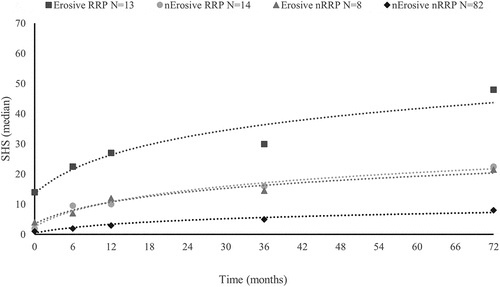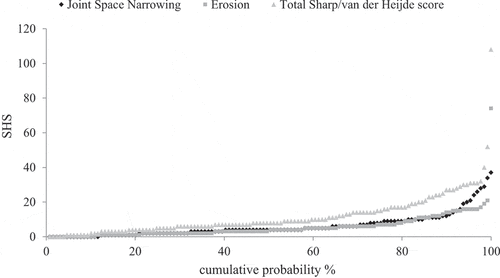Figures & data
Table 1. Baseline characteristics of the patients (n = 219)
Table 2. Radiological outcomes over 6 years of follow-up
Table 3. Univariate negative binomial generalized linear mixed model (GLMM) for radiological progression (change from baseline) at 6 month, 1 year, 3 year, and 6 year follow-up
Table 4. Multivariable negative binomial generalized linear mixed model (GLMM) for radiological progression (change from baseline) at 6 month, 1 year, 3 year, and 6 year follow-up
Table 5. Univariate logistic regression for rapid radiological progression (RRP)
Table 6. Multivariable logistic regression for rapid radiological progression (RRP)
Figure 2. Course of median Sharp/van der Heijde score (SHS) over time plotted separately for each group. Lines are logarithmic fits to the data. The number of patients represents only the patients with available radiological data at all three time-points (baseline, 6 months, and 6 years). Number of total patients = 117 (the difference from 129 available SHS at 6 years in is explained by the exclusion of patients with available SHS at 6 years, but missing SHS at 6 months). Number of patients with rapid radiological progression (RRP) = 27 (the difference from 36 in is explained by exclusion of patients with available SHS at 6 months, but missing SHS at 6 years). RRP is defined as increase in SHS ≥ 4 after 6 months; nErosive, non-erosive at baseline; nRRP, non-rapid radiological progression.

Data availability statement
The data sets generated and/or analysed during the current study are not publicly available for legal and ethical reasons but are available from the corresponding author on reasonable request.

